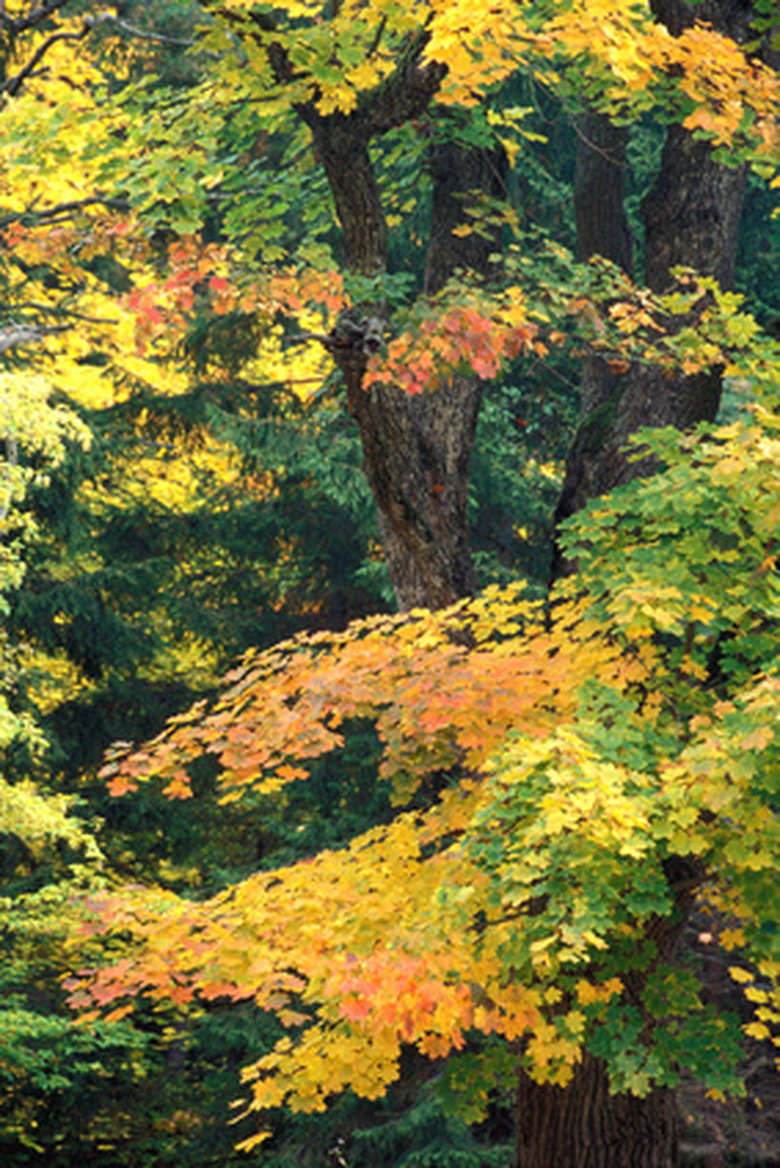Trees That Provide Dappled Shade
You may like to relax under your favorite shade tree for a welcoming respite from the hot sun or simply for a catnap. Trees that provide dappled shade are ideal for cooling off the garden and surrounding space. Oftentimes, shade-providing trees have an open and rounded crown that allows the light to penetrate down through the branches. Tucked along the backyard, trees also provide a focal point to the landscape.
Sycamore
Sycamore (Platanus occidentalis) is a deciduous tree with a medium to rapid growth rate. Providing dappled shade to the landscape, sycamore trees grow 70 to 100 feet tall and 60 to 80 feet wide. The large trunks on the sycamore tree are white with mottled splotches that resemble peeling paper. Sycamore trees have an open crown and spreading form with crooked branches. The leaves on the sycamore tree grow 4 to 9 inches long and tend to drop into the garden all summer long. Sycamore trees require full sun to partial shade and moist, well-drained soil. Plant sycamore trees in USDA Hardiness Zones 4 to 9.
- You may like to relax under your favorite shade tree for a welcoming respite from the hot sun or simply for a catnap.
- Oftentimes, shade-providing trees have an open and rounded crown that allows the light to penetrate down through the branches.
Japanese Angelica
Japanese angelica (Aralia elata) is a deciduous tree that provides a smattering of shade to the landscape. Its irregular and spreading form and pendulous branches create a showy landscape presence. Growing 20 to 40 feet tall and 15 to 30 feet wide, Japanese angelica trees have green leaves that grow over 3 inches long and turn a fiery purple to red in fall. The white flowers on the Japanese angelica tree emerge in summer to create a stunning contrast with the green leaves. Japanese angelica trees require full sun to partial shade and moist, well-drained soil. Versatile, they grow in a wide range of soil types. Plant Japanese angelica trees in Zones 3 to 8.
- Japanese angelica (Aralia elata) is a deciduous tree that provides a smattering of shade to the landscape.
Tulip Tree
Tulip poplar (Liriodendron tulipifera), also known as tulip tree, is a deciduous tree that provides bits of shade to the landscape below. The rounded open crown and upright, oval shape allows the sunlight to penetrate through the branches and down to the ground. Growing 40 to 100 feet tall and 20 to 40 feet wide, tulip trees are wildlife attractants that bring hummingbirds, squirrels and butterflies to the garden. The yellow to green leaves on the tulip tree grow 6 to 8 inches long. The upright, fragrant cup-shaped flowers emerge in late spring to light up the tree. Growing 2 to 3 inches wide, the flower colors on the tulip tree are orange, yellow and green. Tulip trees require full sun and moist, well-drained soil. Plant tulip trees in Zones 4 to 9.
- Tulip poplar (Liriodendron tulipifera), also known as tulip tree, is a deciduous tree that provides bits of shade to the landscape below.
- Growing 2 to 3 inches wide, the flower colors on the tulip tree are orange, yellow and green.
